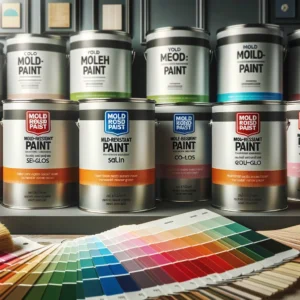Choosing the Right Colours for Your Home
Ever stared at a wall, wondering how in the world “Sunny Day” could look so…blah? Or have you ever slapped on what you thought was the perfect shade, only to cringe at the outcome? You’re not alone. But rest easy, my friend. By the end of this article, you’ll be armed with insights to make colour choices that’ll have neighbours peeking in for inspiration. I will help you choosing the right colours for your home
As someone who’s been entrenched in the colour schemes, painting and decorating, and interior design industry for over a decade, believe me when I say that choosing the right colours for your home is both an art and a science. Throughout my career, I’ve seen countless homeowners wrestle with swatches, only to be disappointed with their choices later. To save you the grief, here’s my time-tested advice for nailing that perfect palette.

The Power of Color Psychology
Colour psychology is a foundational element that shapes the ambiance and mood of your home. Every hue we choose for our walls, furniture, and decor holds the power to evoke specific emotions and responses. Let’s unravel this colourful tapestry and discover how to use colour psychology to our advantage in creating spaces that are not only aesthetically pleasing but also emotionally resonant.
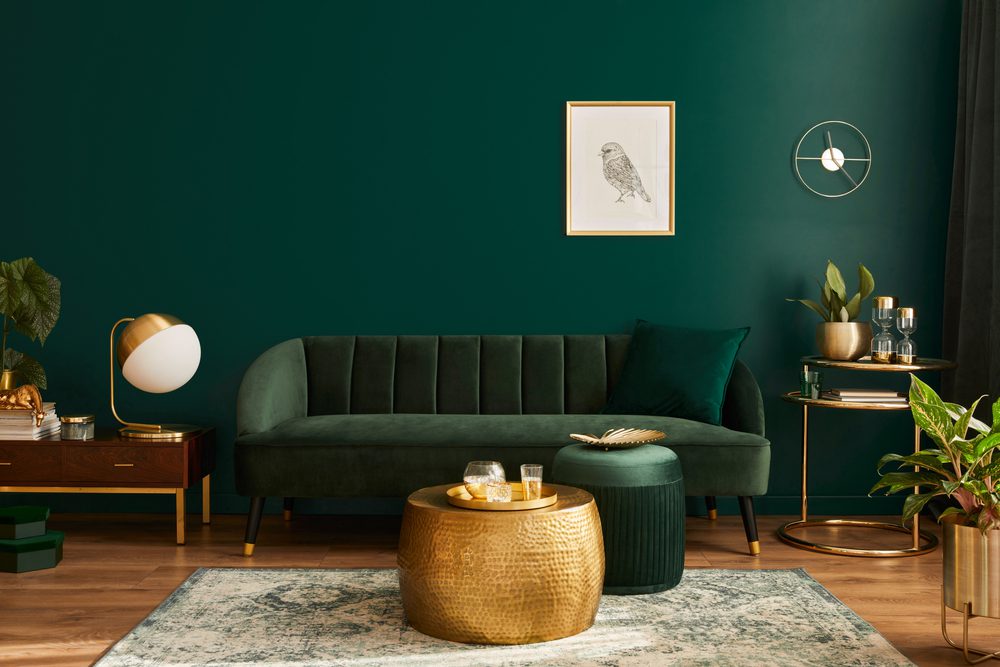
| Colour | Mood/Emotion Evoked | Ideal for Room Type |
|---|---|---|
| Red | Energy, Passion, Appetite Stimulation | Dining Room, Kitchen |
| Blue | Calmness, Serenity, Relaxation | Bedroom, Bathroom |
| Yellow | Happiness, Energy, Creativity | Kitchen, Home Office, Playroom |
| Green | Harmony, Balance, Refreshment | Living Room, Study, Conservatory |
| Purple | Luxury, Creativity, Calm (darker shades) | Living Room, Creative Spaces |
| Orange | Enthusiasm, Excitement, Warmth | Exercise Room, Playroom |
| Pink | Calm, Warmth, Nurturing | Child’s Bedroom, Reading Nook |
| Grey | Sophistication, Neutrality, Calm | Any Room, depending on the shade |
| Brown | Stability, Grounding, Nature | Living Room, Library |
| White | Cleanliness, Purity, Space | Small or cramped spaces to give an illusion of space |
| Black | Elegance, Sophistication (when used sparingly) | Accents in various rooms |
Understanding Colour and Emotion
Colours speak a silent language of emotions. Warm colours like red, orange, and yellow are known to evoke feelings of warmth, comfort, and energy. They are stimulating and can be used to enliven spaces such as the living room or kitchen. In contrast, cool colours like blue, green, and purple often evoke calmness and relaxation, making them ideal for bedrooms and bathrooms where serenity is desired.
Creating Room-by-Room Harmony
When selecting colours for each room, consider the primary activities and the mood you wish to foster in those spaces. For instance, a study or home office might benefit from calming blues or greens, which are known to aid concentration and reduce stress. On the other hand, a dining area might come alive with warmer tones that encourage conversation and appetite.
Colour Intensity and Its Effects
It’s not just the colour, but also its intensity that impacts mood. Bright, saturated colours can energize a space, making them great for areas where activity and interaction are key. Softer, muted colours, however, are more relaxing and better suited for quiet, contemplative spaces.
The Role of Neutrals
Neutral colours, often underrated, play a crucial role in colour psychology. They provide a backdrop against which other colours can pop. Neutrals can also bring balance to a room, especially if you’re using a mix of warm and cool tones.
The Psychological Impact of Colour Combinations
Combining colours can also influence mood and perception. Harmonious colour combinations can create a sense of balance and unity, while contrasting colours can add vibrancy and energy to a room.
Personal Connections to Colour
Remember, colour psychology is also deeply personal. Cultural backgrounds, personal experiences, and individual preferences can all influence how we perceive and react to different colours. It’s important to choose colours that resonate with you personally.
Understanding Light and Its Impact
When it comes to selecting the perfect paint colour for your home, light is a game-changer. It’s the unseen artist’s brush that can dramatically alter the appearance of colours, shaping the mood and ambiance of your rooms. In this section, we’ll delve into the crucial role of light – both natural and artificial – and how it can influence your colour choices, ensuring that the hues you select look stunning at all hours.
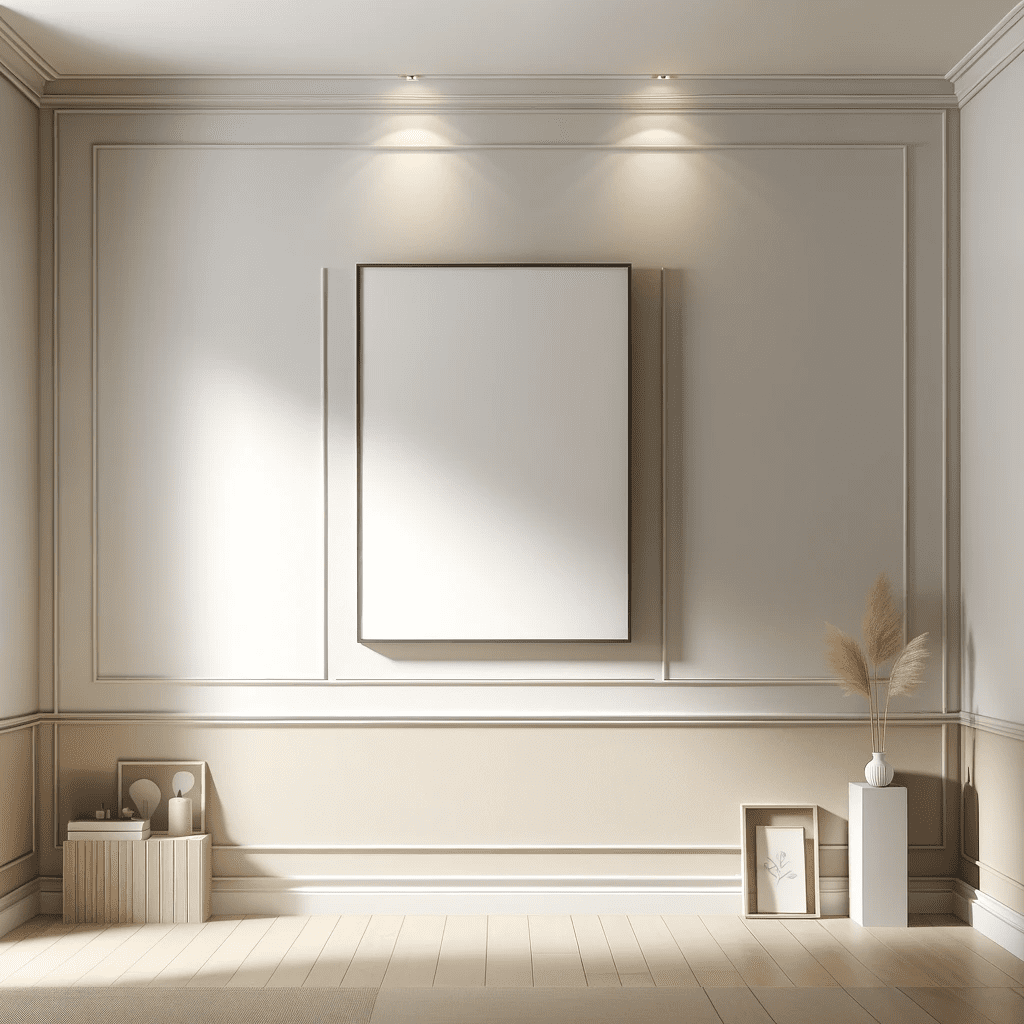
The Dance of Colors and Natural Light
Natural light is a dynamic and powerful factor in how we perceive color. North-facing rooms, often awash in cooler, bluer light, can make colors appear differently than in south-facing rooms bathed in warm, golden light. East and west-facing rooms experience a dramatic shift in light throughout the day, from the crisp morning light in the east to the warm evening glow in the west. This means a color can look subtly different throughout the day, so it’s essential to observe your paint samples under varying natural lighting conditions.
Artificial Lighting: Setting the Tone
Artificial light plays an equally important role. The type of bulbs you use can greatly influence how a color is perceived. Incandescent bulbs, casting a warm, yellowish glow, can enhance warm tones and mute cooler colors. Fluorescent lighting, on the other hand, emits a cooler, bluish light that can amplify blues and greens but dull warmer hues. LED lights, versatile in their range, can be selected to mimic either warm or cool light, offering more control over how colors appear in your home.
Color Temperature and Paint Choices
Understanding color temperature is key when considering how light will interact with your paint colors. Warmer colors tend to work well in rooms with less natural light as they can make the space feel cozier, whereas cooler colors can counteract the intensity of rooms with abundant natural light, creating a calming environment.
Light Reflectance Value (LRV)
Every paint color has a Light Reflectance Value, indicating how much light it reflects. Lighter colors have higher LRVs and can make a room feel more spacious and brighter, while darker colors, with lower LRVs, create a more intimate and grounded ambiance. This is a critical factor to consider, especially in rooms with limited natural light.
Testing is Key
The best way to understand the interplay of light and colour in your space is through testing. Paint large swatches on different walls and observe them at various times of the day and under different lighting conditions. This will give you a true sense of how the color will live in your home.
Investing in Quality Paint
When you starting to transform your home with colours, the quality of the paint you choose is as crucial as the hue itself. Investing in high-quality paint is not merely a matter of aesthetics; it’s about durability, coverage, health, and environmental impact. In this section, we’ll explore why splurging a little more on quality paint can make a world of difference in your home decor endeavours.
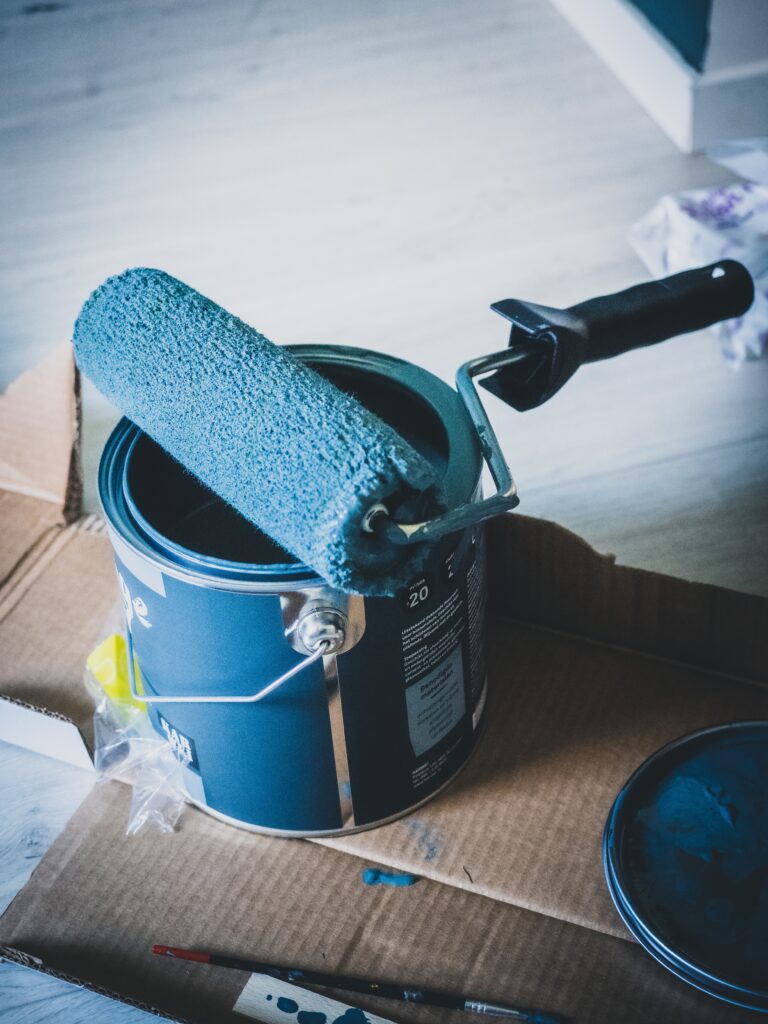
Superior Coverage and Durability
One of the most significant advantages of high-quality paint is its exceptional coverage. These paints typically require fewer coats to achieve a vibrant, even color, saving you time and effort during the application process. Additionally, they tend to be more durable and resistant to fading, chipping, and wear over time. This means your walls will look freshly painted for longer, reducing the need for frequent touch-ups or repaints.
Richer Pigments, Deeper Colors
High-quality paints are formulated with finer, more concentrated pigments, providing deeper and more accurate colors. This richness in color depth ensures that the paint will look more luxurious and closer to the color you fell in love with on the swatch. It also means that the paint maintains its integrity and vibrancy even under different lighting conditions.
Ease of Application
The consistency and texture of premium paints make them a dream to work with. They spread more smoothly and evenly, reducing the likelihood of brush marks and streaks. This is especially beneficial for DIY decorators, as it makes the painting process more forgiving and enjoyable.
Health and Environmental Considerations
Many high-quality paints now come with low or zero Volatile Organic Compounds (VOCs). VOCs are chemicals that evaporate at room temperature and can cause short and long-term health effects. Low-VOC paints contribute to better indoor air quality and are safer for you and your family. Additionally, these paints are often more environmentally friendly, aligning with sustainable living values.
Cost-Effectiveness in the Long Run
While high-quality paint might have a higher upfront cost, it’s more cost-effective in the long run. The longevity and reduced maintenance needs of these paints mean that you won’t need to repaint as often, saving money over time. Moreover, the ease of application can reduce the need for professional help, further cutting down costs.
Starting with Neutrals
One timeless approach to simplify this decision-making process is to start with neutrals. Neutral colours provide a sophisticated and flexible foundation, allowing you to build and adapt your interior décor with ease.
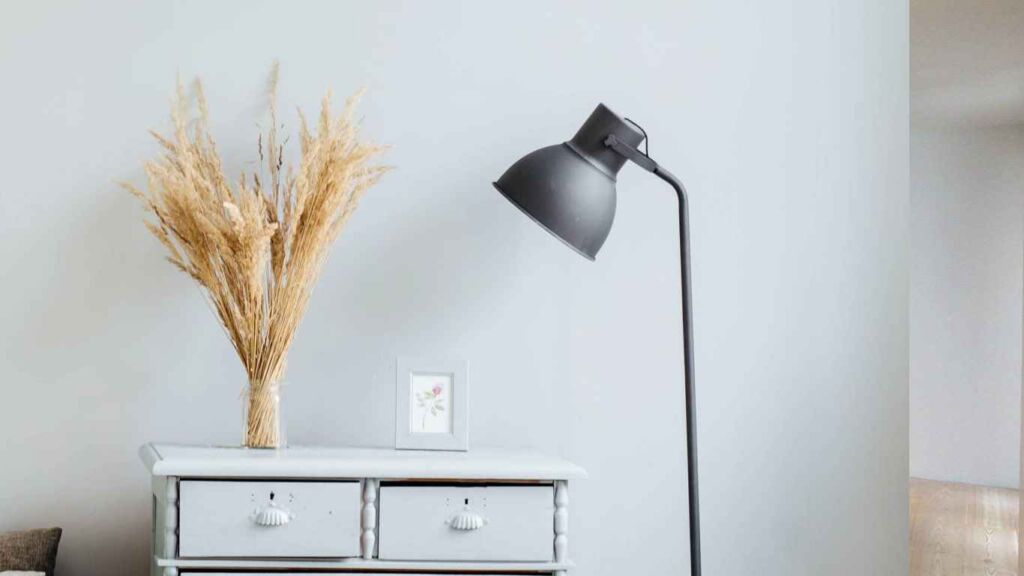
The Versatility of Neutral Hues
Neutral colors, such as beiges, greys, whites, and off-whites, are often considered the backbone of interior design. Their understated elegance offers a canvas that works harmoniously with various styles, from minimalist to bohemian, and everything in between. Neutrals create a serene and inviting backdrop, allowing other design elements like furniture, art, and accessories to take center stage.
Creating a Sense of Space and Light
Neutral colors have a remarkable ability to make spaces feel more open and airy. Lighter neutrals, in particular, can reflect natural light, making rooms appear brighter and more spacious. This quality makes them an excellent choice for smaller rooms or spaces with limited natural light.
Layering Textures and Colors
One of the greatest strengths of neutral colors is their ability to blend seamlessly with a wide range of textures and accent colors. You can layer different materials like wood, metal, glass, and fabric to add depth and interest to a room. Neutrals also provide a stable base for introducing bold color splashes through artwork, cushions, rugs, or statement furniture pieces, giving you the flexibility to change the look and feel of your room without a complete overhaul.
Evolving with Your Style
As your taste and lifestyle evolve, so can your interior décor – and neutrals are wonderfully accommodating of this evolution. They offer a timeless quality that transcends fleeting design trends, ensuring your home always feels contemporary and refined.
A Harmonious Transition Between Rooms
When you use a neutral palette as a base throughout your home, it creates a seamless and cohesive flow from one room to another. This continuity is pleasing to the eye and fosters a sense of harmony and balance throughout your living space.
Creating a Colour Scheme
Crafting a colour scheme for your home is much like composing a beautiful piece of music – it’s about creating harmony, rhythm, and a personal touch. A well-thought-out colour scheme sets the tone for your home, reflecting your personality and style.

Understanding the Colour Wheel
The colour wheel is your guide to understanding how different colours relate to each other. It’s divided into primary colours (red, blue, yellow), secondary colours (created by mixing primary colours), and tertiary colours (made from primary and secondary colours). Using the colour wheel, you can create various colour schemes:
- Complementary Scheme: This involves pairing colours that are opposite each other on the wheel, like blue and orange. It’s great for adding a vibrant and energetic feel to your space.
- Analogous Scheme: This scheme uses colours next to each other on the wheel, like blue, blue-green, and green. It’s ideal for a harmonious and serene look.
- Triadic Scheme: Here, you use three colours evenly spaced around the wheel, such as red, yellow, and blue, for a lively and dynamic atmosphere.
Consider Your Home’s Architecture and Lighting
Your home’s architecture can influence your colour scheme. Historical properties may benefit from a palette that enhances their period features, while modern homes might suit bold and contemporary colours. Also, consider how light – both natural and artificial – interacts with colours in your space. Light can dramatically change how a colour looks and feels throughout the day.
Building a Palette from Neutrals
Start with a neutral base and layer in colours for depth and interest. Choose neutral shades for walls and large furniture pieces, then add in pops of colour with accessories, textiles, and art. This approach allows flexibility to update your colour scheme easily over time.
The Importance of Testing Colours
Choosing the right paint colour for your home is a process full of excitement. It’s a decision that will influence the ambiance of your space every day. This is where the crucial step of testing paint colours comes into play, a step that can transform uncertainty into confidence.
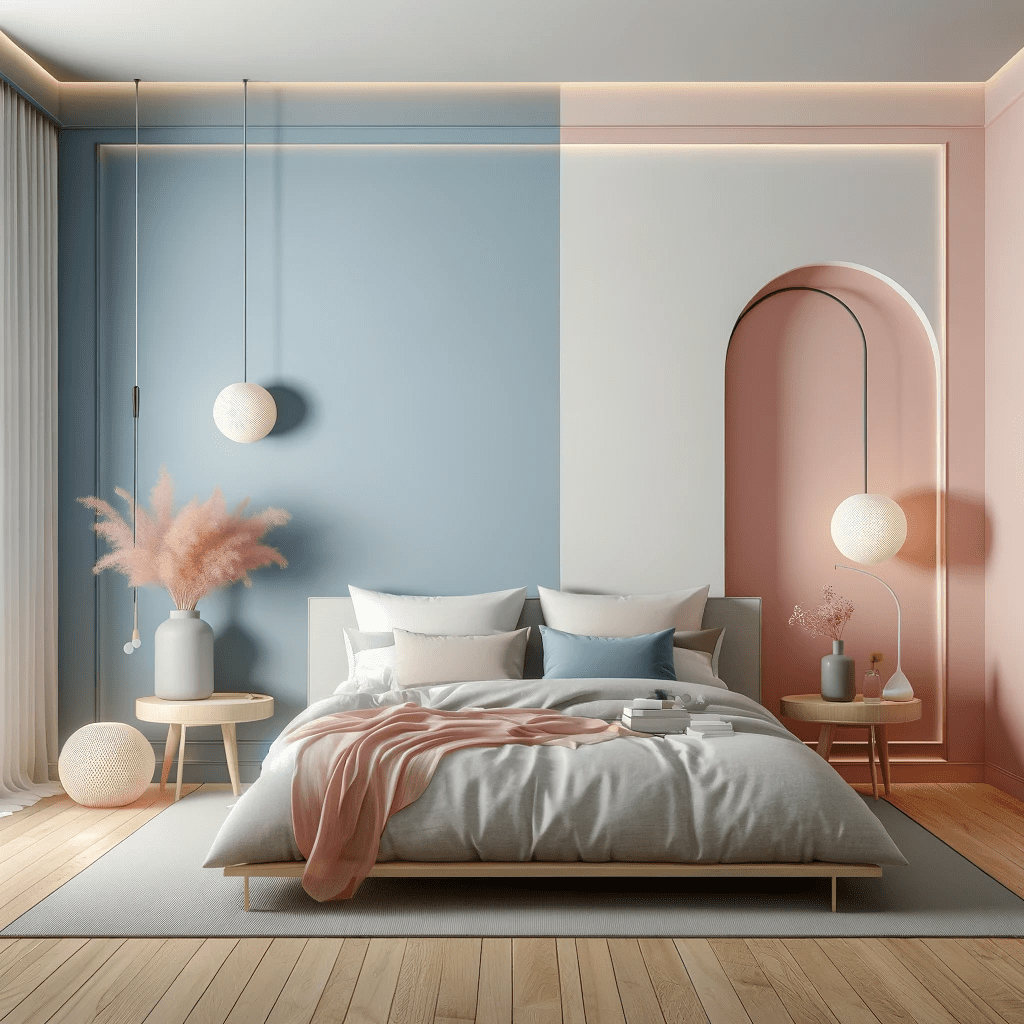
Seeing Is Believing
A paint swatch can only tell you so much. The true character of a paint color reveals itself when it’s on the wall, interacting with the room’s specific lighting conditions and surrounding elements. Testing allows you to see the color in its truest form, in the environment where it will actually live.
Lighting’s Impact on Paint Colors
Lighting, both natural and artificial, significantly affects how a paint color appears. A color can look dramatically different under the warm glow of a lamp compared to natural daylight. By testing paint directly on your walls, you can observe how the color changes throughout the day and in different lighting conditions, ensuring you choose a color that you’ll love in every light.
Complementing Your Decor
Your decor plays a key role in how a color manifests in your space. Testing colors allows you to see how they interact with elements like your furniture, artwork, and flooring. This helps in selecting a color that not only looks beautiful on its own but also harmonizes with your existing decor.
Understanding Undertones
Every paint color has an undertone that can be tricky to identify from a swatch alone. Undertones become more apparent when the color is on a larger surface area. Testing helps in distinguishing these subtle hues, ensuring the color aligns with your vision and doesn’t clash with other design elements.
Emotional Connection
Living with a test color for a few days gives you a chance to form an emotional connection with it. You’ll discover how the color makes you feel and whether it suits the mood and atmosphere you want to create in your space.
Avoiding Costly Mistakes
Repainting a room because the color didn’t turn out as expected can be frustrating and expensive. Testing colors is a small investment that can save you time, money, and disappointment in the long run.
Your Home, Your Colours
As we conclude this vibrant journey through the world of interior paint colours, it’s important to remember that the choices you make are a reflection of your unique personality and style. Your home is more than just a space; it’s a canvas where your life’s stories are told, memories are made, and dreams are nurtured. The colours you choose to adorn your walls play a pivotal role in bringing this canvas to life.
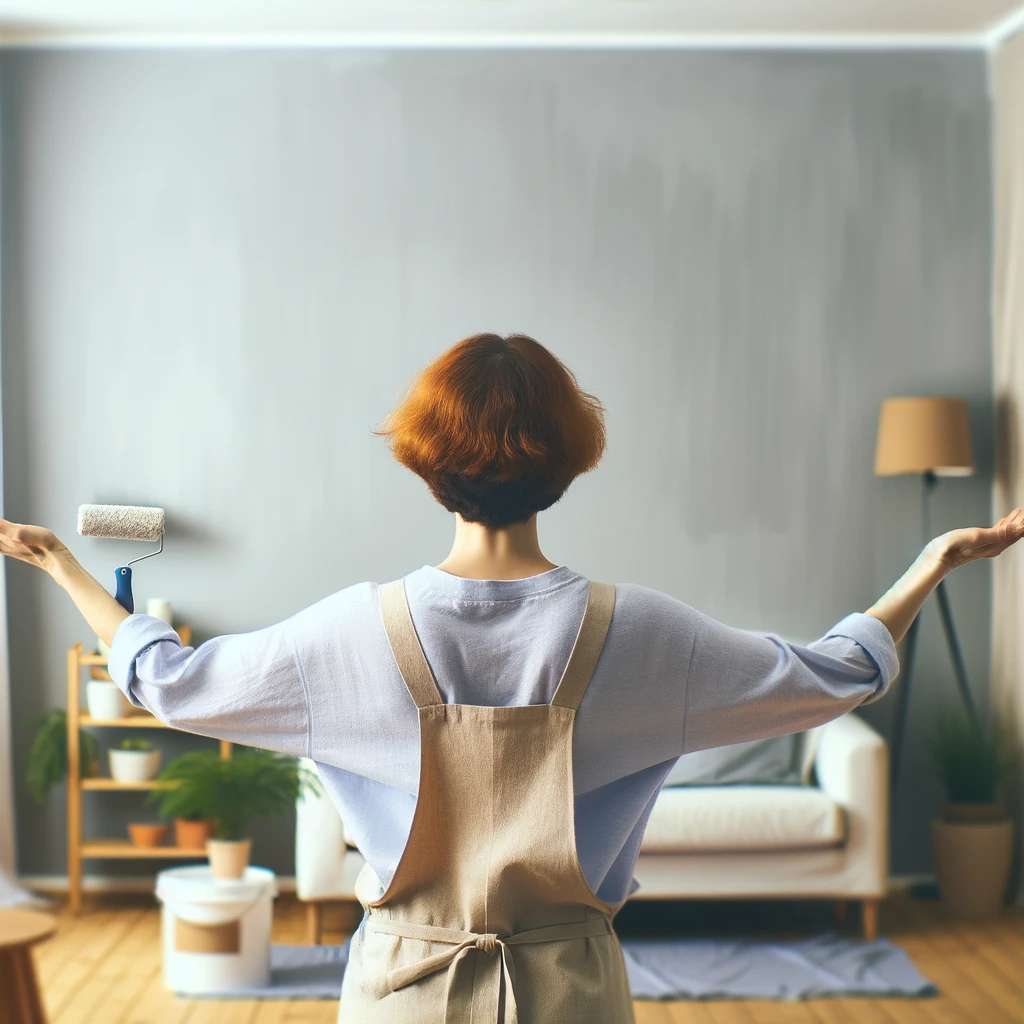
Embracing Personal Style
In the quest for the perfect paint colour, always stay true to your personal taste. Trends may come and go, but your comfort and joy in your living space are timeless. Whether you prefer bold and bright hues or soft and soothing tones, your choice should resonate with who you are and what you love.
Creating Emotional Harmony
Remember, colours have the power to influence mood and emotion. Use this knowledge to create spaces that not only look stunning but also feel welcoming and comfortable. Let your living room energise, your kitchen inspire culinary creativity, and your bedroom soothe you into restful slumber.
Adapting and Evolving
Your life and your home are ever-evolving, and so too can your colour choices. Don’t be afraid to experiment, to change, and to grow in your colour preferences. What matters most is that your home continues to be a true reflection of you and your journey.
Quality and Sustainability Matter
In your colour and paint selections, consider the quality and environmental impact. Opting for high-quality, eco-friendly paints not only ensures a beautiful finish but also contributes to the health and wellbeing of your family and the planet.
Seeking Expert Guidance
If ever in doubt, remember that help is at hand. Professional colour consultants and interior designers can provide valuable insights and guidance, helping you to make choices that you will love for years to come.
Your Home, Your Colours, Your Story
Ultimately, the colours you choose are chapters in the story of your home. They are an expression of your life, your loves, and your experiences. Take this journey with heart and joy, and know that whatever palette you choose, it will be perfect for you.
So, as you pick up that paintbrush and palette, remember that every stroke is a part of your journey, a reflection of your personality, and a step towards creating the home of your dreams. Your home, your colours – make it a masterpiece!
frequently asked questions
Start by considering the room's purpose, lighting, and existing furnishings. Use colour psychology to select hues that match the desired mood and atmosphere. Test paint samples on your walls to see how they look under different lighting conditions throughout the day.
Purchase sample pots of your chosen colours. Paint large swatches on different walls in the room you plan to decorate. Observe these swatches at various times of the day and in different lighting to get a true sense of the colour.
Paint swatches are a good starting point but they can be misleading. The best approach is to test the colour in your own space, as the lighting and surroundings in your home will affect how the colour looks.
Start with three to five shades. It’s manageable and provides variety.
Absolutely! Wallpaper can offer textures and patterns paint can't. But remember, it's a bit more permanent than paint.
Eggshell or satin for most rooms. Bathrooms and kitchens benefit from semi-gloss due to moisture.
Indeed. Light colors can make a room seem spacious, while dark tones can make it cozy.
Stick to one brand for a specific project to ensure uniformity in finish and quality.
Look into muted pastels paired with bold accents. A soft pink with deep blue accents, for instance.
Choosing the Right Colours for Your Home is an exciting journey of self-expression and creativity. Remember, the beauty of paint is that it’s not permanent. So, be bold, be experimental, and most importantly, have fun!
After all, home is where the heart (and hue) is.


